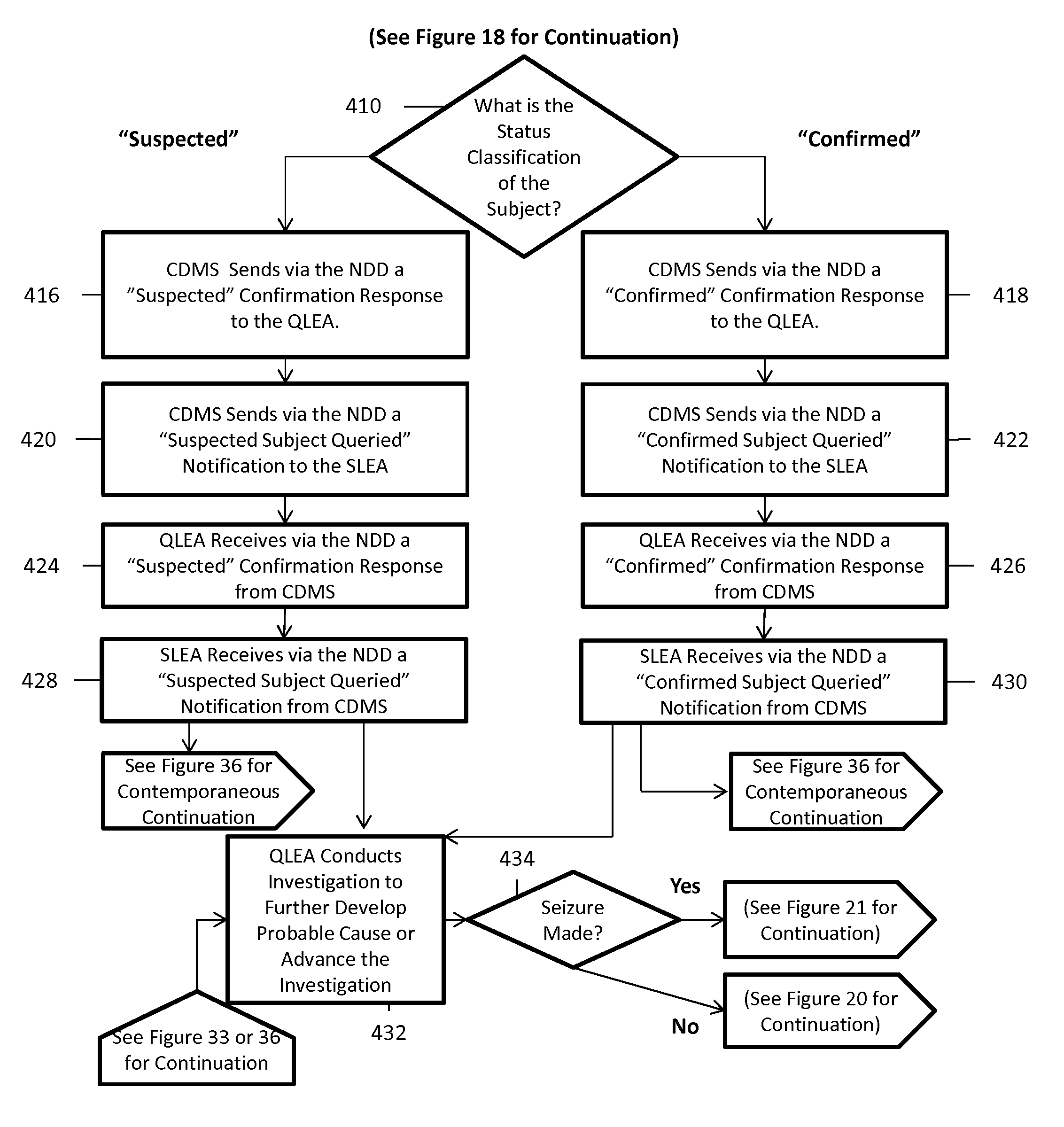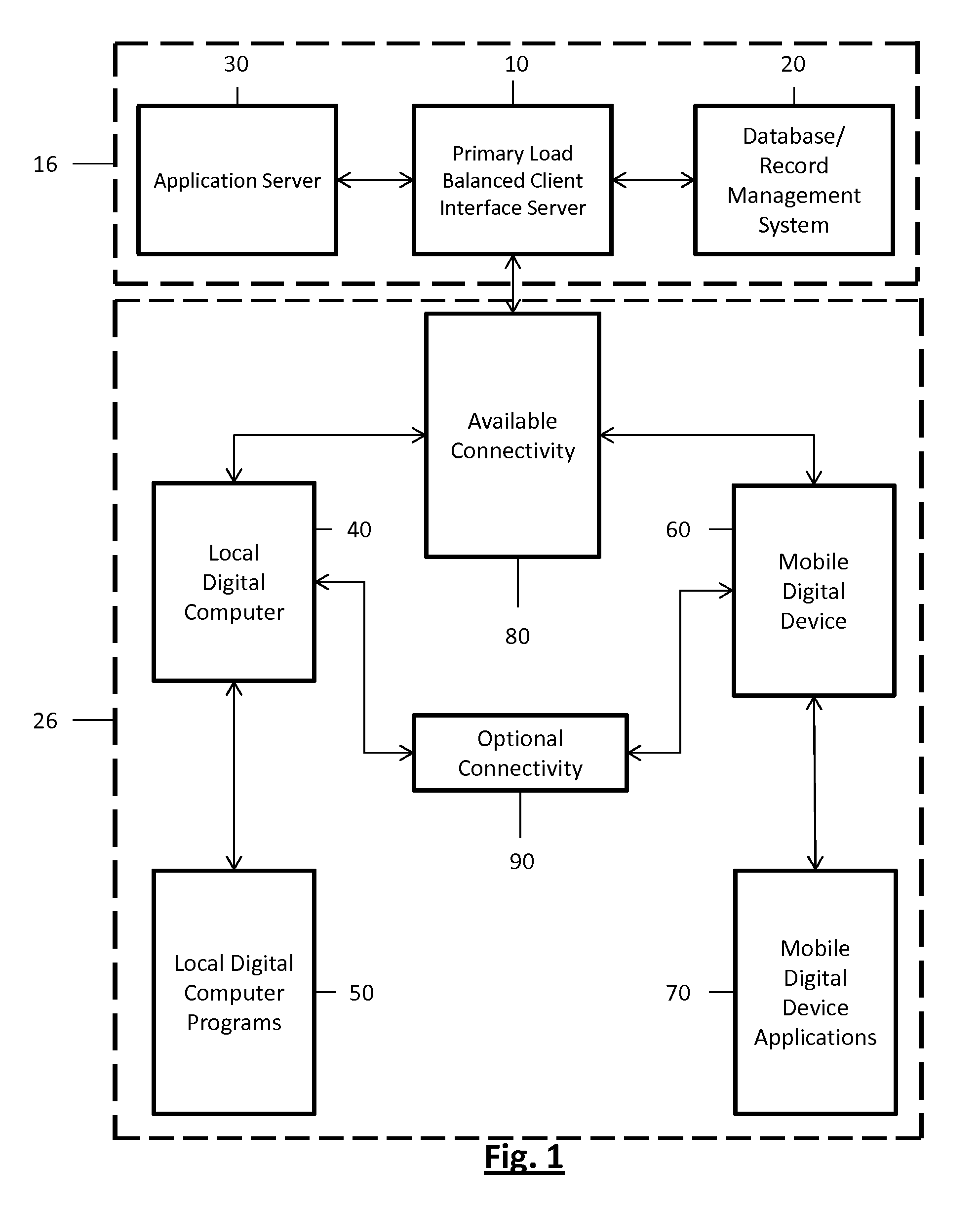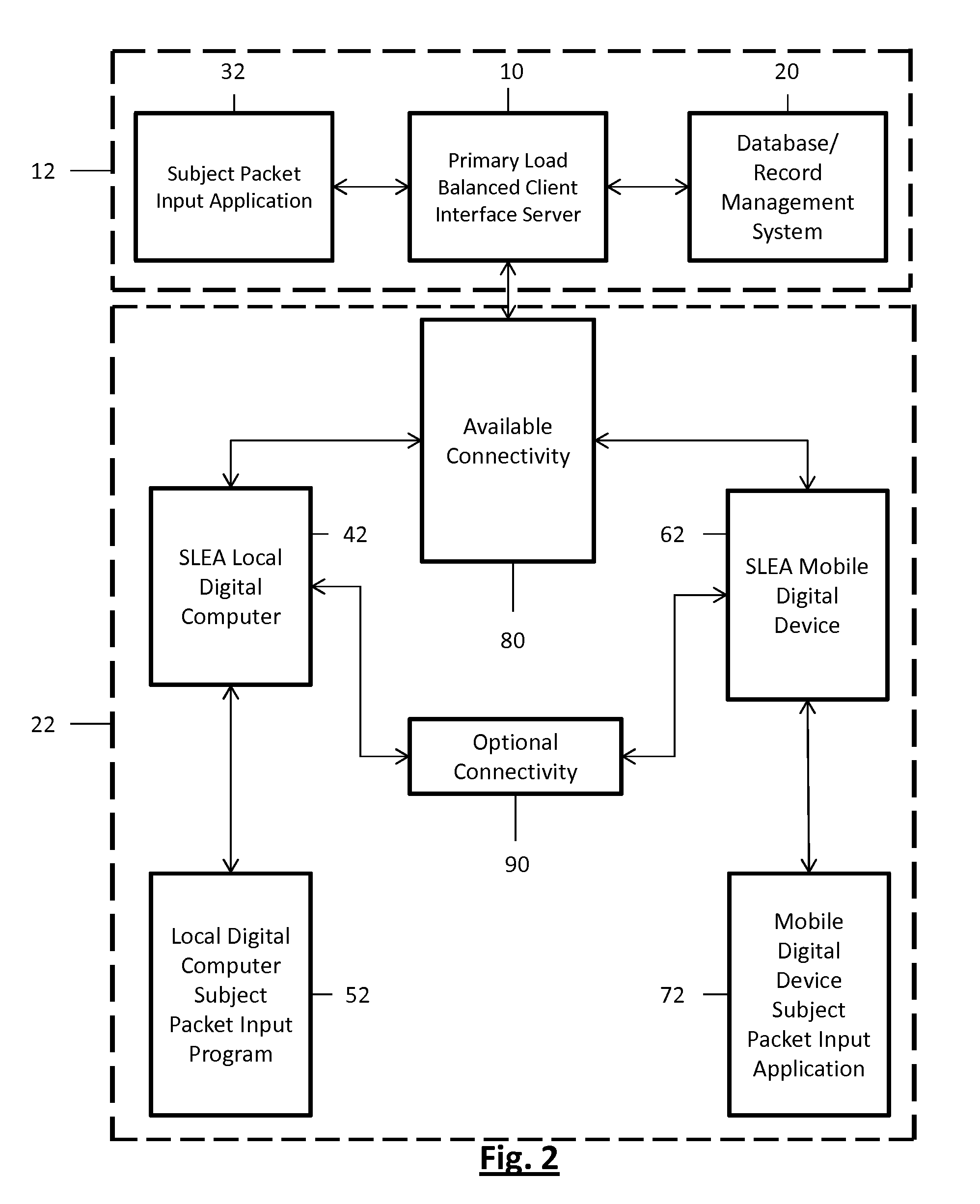System and method for facilitating the execution of law enforcement duties and enhancing anti-terrorism and counter-terrorism capabilities
a technology of law enforcement duties and facilitation methods, applied in the field of system and method for facilitating the execution of law enforcement duties, can solve the problems of not being able to effectively facilitate critical law enforcement procedures commonly utilized by front-line officers, not being able to effectively use criminal intelligence information already developed and maintained, and unable to achieve the effect of facilitating the seizing of terrorist assets, preventing the unlawful use of force and violence, and enhancing counter-terrorism defenses
- Summary
- Abstract
- Description
- Claims
- Application Information
AI Technical Summary
Benefits of technology
Problems solved by technology
Method used
Image
Examples
Embodiment Construction
[0022]Accordingly, the present invention is directed to a system and method for facilitating the execution of law enforcement duties and enhancing counter-terrorism defenses that substantially obviate one or more problems resulting from the limitations and deficiencies of the related art.
[0023]In the system and method hereinafter described, the information contained in an agency's report is used to identify a subject (i.e. a person, vehicle, address, phone number, stolen property, evidence buy funds, bait money, etc.) and classify that subject's criminal nature prior to that information being entered into the database. Although the identification and classification of a subject is supported by the criminal intelligence contained in that agency report, the report itself is not needed to populate the database. Instead, only the limited information about a subject, the agency's report number, and the agency's contact information are needed. Such a succinct presentation of only the most...
PUM
 Login to View More
Login to View More Abstract
Description
Claims
Application Information
 Login to View More
Login to View More - R&D
- Intellectual Property
- Life Sciences
- Materials
- Tech Scout
- Unparalleled Data Quality
- Higher Quality Content
- 60% Fewer Hallucinations
Browse by: Latest US Patents, China's latest patents, Technical Efficacy Thesaurus, Application Domain, Technology Topic, Popular Technical Reports.
© 2025 PatSnap. All rights reserved.Legal|Privacy policy|Modern Slavery Act Transparency Statement|Sitemap|About US| Contact US: help@patsnap.com



